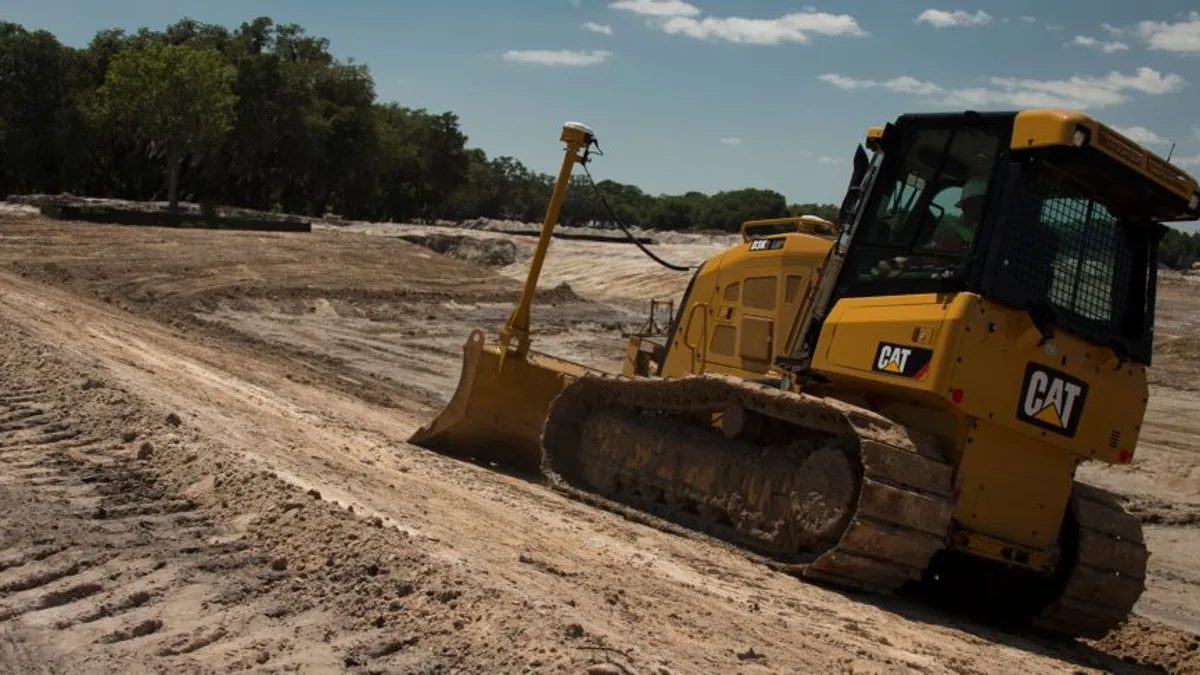Dive Brief:
-
Equipment maker Caterpillar showed off its autonomous, 300-ton mining trucks earlier this month, offering a look at how self-driving vehicles can work alongside human-operated ones on busy job sites, according to the Peoria (IL) Journal Star. That could lead to future developments in autonomous construction equipment.
-
The trucks are fitted with onboard computers that can spot and allow the vehicle to avoid rocks along haul paths, locate the berm on dump sites, and dodge collisions with workers or other vehicles while reducing demand on the site's wireless network, For Construction Pros reported.
-
The company has two autonomous mining vehicles at work on customer sites, with plans to have more than 100 vehicles on three continents and in three mining functions by the end of this year. Caterpillar's autonomous vehicles have transported more than 400 million metric tons without injury in the four and a half years they've been in use.
Dive Insight:
Key to Caterpillar's success with autonomous vehicles has been its partnerships with technical and financial companies, according to Equipment World.
For the last 10 years, Caterpillar has worked with Torc Robotics to hone its automation technology. The two developed Caterpillar's now two-year-old RemoteTask skid steer remote control system. They are now working on a system that would allow Caterpillar's self-driving technology for mining trucks to operate a Komatsu 930E hauler by sometime in early 2019.
Autonomous vehicles are expected to grow their presence on highways as well as on job sites. Last week, the U.S. Department of Transportation unveiled voluntary guidelines for connected and autonomous vehicle (CAV) technology as part of a broader effort to clarify states' role in regulating the technology and to spur automakers to move forward with efforts to develop CAV.
That technology is already being developed across the U.S., from self-driving cars to smart highway testing centers. Moving beyond mass-produced consumer vehicles, other manufacturers are exploring uses for the technology on larger, commercial vehicles.
In Florida, a 400-acre test site currently underway will be used to experiment with high-speed connected platooning trucks, for example. Meanwhile, self-driving buses are piquing the interest of other vehicle developers, with testing in London and Japan. Reports from Bloomberg BNA suggest that spectators of Super Bowl LII in February could be shuttled around on an autonomous bus.












